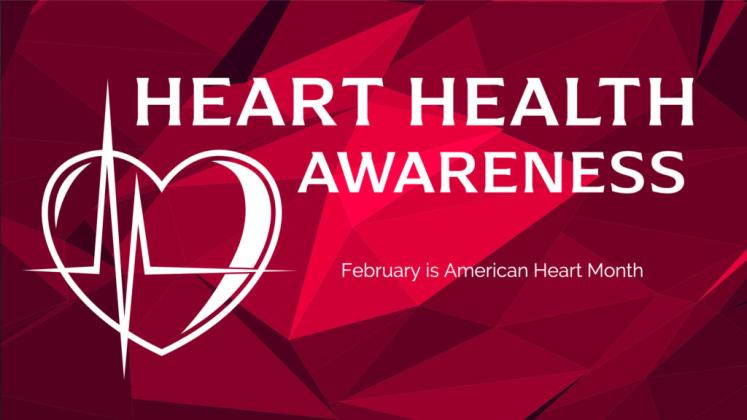February is American Heart Month, and the American Heart Association, the Association’s Together to End Stroke sponsor, the HCA Healthcare Foundation, and local affiliate HCA Florida Healthcare are all working together to prevent stroke and improve health in Central Florida.
The consistent goal is to empower people to know their vital numbers and monitor blood pressure.
High blood pressure is a leading cause of both heart disease and stroke. It’s often referred to as the “silent killer” because it can do damage to a person’s health without any symptoms. High blood pressure leads to cardiovascular disease which is the No. 1 cause of death in the United States. Cardiovascular disease accounts for approximately 1 out of 5 deaths in Florida.
Dr. Jean-Luc Delafontaine, a cardiothoracic surgeon affiliated with HCA Florida Osceola Hospital who specializes in heart and lung surgical procedures, spoke about being proactive about your own heart, to learn about the common warning signs of a cardiac issue, and the symptoms of cardiovascular disease.
Osceola News-Gazette: What types of patients do you typically see in your practice? What are some of the common cardiac issues you treat?
Dr. Delafontaine: We treat patients with problems like coronary artery disease, a medical condition characterized by the narrowing or blockage of the coronary arteries. This disease is most common due to high blood pressure, high cholesterol, diabetes, and smoking.
We also see patients come in with Aortic Stenosis. The aortic valve is the valve that regulates blood flow from the left ventricle to the aorta (the main artery that carries oxygen-rich blood to the rest of the body). The narrowing of the aortic valve restricts the flow of blood from the heart to the aorta and, subsequently, to the rest of the body. Aortic stenosis can be acquired or congenital. Most people who get treated for issues in this area are people 65 or older.
Lastly, we see patients with aortic dissection which involves a tear in the inner layer of the aorta. When a tear occurs, blood is forced through the tear, creating a false channel within the layers of the aortic wall.
Overall, the issues we most commonly see are among people in their 70s to 80s. Sometimes there are patients in their 30s and 40s but not many.
ONG: When a patient comes to you, do they usually have a history of heart disease or have they already had a cardiac event, like a heart attack?
JLD: Probably over half of the patients we see don’t know they have heart problems. However, I would say just under half of them have problems with their heart and some have even had open-heart surgery before. Most of the patients we see have experienced their first heart attack.
ONG : Can you share some of the latest advancements in diagnosing and treating cardiovascular disease?
JLD: This is an exciting question! Overall, we are better able to identify issues and look inside the coronary arteries. Total Arterial Coronary Artery Bypass Grafting is a big one. It is a surgical procedure used to treat coronary artery disease, particularly when the blood vessels supplying the heart muscle become narrowed or blocked. In CABG, a surgeon takes a healthy blood vessel from the left chest wall and typically a vein from the leg to bypass the blocked portion of the coronary artery. Recently, studies have shown that in addition to the artery from the left chest, taking arteries from the forearms and/or the right chest results in better outcomes.
Xenotransplantation is also an exciting emerging treatment. It’s when a diseased or failing heart is replaced with a healthy heart. The doctors and scientists at the University of Maryland performed the historic transplant of a pig heart into a patient with end-stage cardiovascular disease in September 2023. They utilized a fascinating new gene editing technology called CRISPR which allowed them to make the pig heart less likely to be rejected by the patient. This will hopefully allow us to treat transplant patients with these hearts in the future.
ONG: If a person has not previously been diagnosed with heart disease, are there warning signs that may signal something is wrong and that treatment may be required?
JLD: The most common symptoms are chest pain, fatigue, and gradual swelling of both legs.
ONG: For those who have not been diagnosed with heart disease, what are the most important recommendations to help maintain a healthy heart?
JLD: Know your family history. Talk to your mom, dad, sister, and brother. Even if you don’t learn the exact problem, learning that there was a problem is important.
Monitor your blood pressure, making sure it’s not too high. Have a healthy diet with low sugar, low saturated fat, and low salt. Plant based diets are good as well as diets with chicken, fish, legumes and nuts.
Get some amount of exercise. I recommend 20 to 30 minutes per day or 150 minutes per week. This can be done in small ways like taking the stairs at work. Take medications as prescribed. It’s just like brushing your teeth, you must take your medication every day.
Quit smoking—It’s always easier to quit together than quitting alone if you’re in a relationship and the two of you smoke.
Drink alcohol moderately. No alcohol consumption is probably best.




